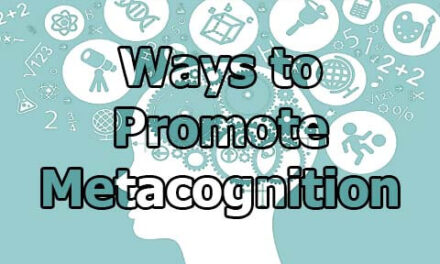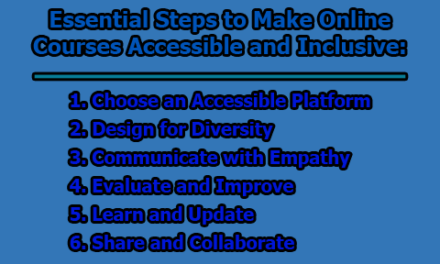The Role of Advertisements in ESP Teaching:
The role of advertisements in English for Specific Purposes (ESP) teaching is a topic of growing interest and importance, particularly in today’s globalized world. ESP is a specialized branch of English language teaching that focuses on teaching English to learners who have specific needs or goals, such as those in business, healthcare, engineering, or any other professional field. Here, we will explore the role of advertisements in teaching:
1. Relevance and Authenticity: Advertisements are highly relevant and authentic materials for ESP teaching. They mirror the language and communication styles used in real-world professional contexts. When ESP learners encounter authentic language in advertisements, they become better prepared for their future careers. For instance, a medical student studying ESP might come across pharmaceutical advertisements in medical journals or online sources, which closely resemble the language they will use in their clinical practice. This exposure to real-life communication can build their confidence and effectiveness in professional settings.
2. Vocabulary and Terminology: Specialized vocabulary and terminology are a fundamental component of ESP. Advertisements frequently employ industry-specific jargon and terminology. By studying ads in their field, learners can acquire and reinforce this crucial vocabulary. For example, a finance professional studying ESP may analyze advertisements for financial services to learn terms like “equity portfolio,” “capital gains,” or “diversification,” which are essential for their work.
3. Reading Comprehension: Advertisements come in diverse formats, including print ads in magazines, online banner ads, and product descriptions on e-commerce websites. These formats offer opportunities for learners to enhance their reading comprehension skills. Analyzing these texts helps learners practice skimming, scanning, and in-depth reading, which are essential skills for extracting meaning from various professional documents.
4. Listening and Speaking Skills: Video and audio advertisements are excellent resources for improving listening skills. They challenge learners to understand spoken language at a natural pace, with background music and sound effects. Additionally, learners can practice speaking by reenacting and discussing the content of these ads. For example, engineers studying ESP may analyze a video advertisement for an innovative technology product, then engage in discussions about its features and applications in their field.
5. Cultural Understanding: Advertisements often incorporate cultural elements and nuances to appeal to their target audience. This makes them a valuable source for developing cultural awareness. For ESP learners working in international or multicultural contexts, understanding cultural subtleties in communication is critical. By analyzing ads, they can explore how language and imagery are tailored to different cultural expectations and norms. This understanding is essential for building effective cross-cultural communication skills in a professional setting.
6. Critical Thinking and Analysis: Advertisements provide an excellent platform for ESP learners to develop critical thinking skills. They can critically assess the effectiveness of various marketing strategies employed in ads, such as the choice of target audience, the use of persuasive techniques, and the clarity of messaging. This type of analysis allows learners to go beyond surface-level comprehension and think critically about the intent and impact of communication in their professional context. For example, business students studying ESP can analyze a marketing campaign and discuss the strategies used to attract customers and promote brand loyalty.
7. Professional Communication: Advertisements are a treasure trove of persuasive and promotional language. For many ESP learners, effective professional communication is a critical skill. By studying advertisements, they can gain insights into crafting compelling messages, creating marketing materials, and understanding how language is used to engage and influence customers. This skill is particularly important in fields like marketing, where the ability to create persuasive content is essential for success.
8. Writing Skills: ESP learners can improve their writing skills by creating their own advertisements or marketing materials. This practical exercise helps them learn how to tailor their language to a specific target audience and craft persuasive messages effectively. For instance, engineering students can practice writing product descriptions or technical advertisements, which not only enhances their language skills but also provides practical experience they can apply in their careers.
9. Multimodal Learning: Advertisements often combine various modes of communication, including text, visuals, and sometimes audio elements. This multimodal approach engages learners with different learning preferences and strengthens their language skills through different channels. For example, medical students studying ESP might analyze pharmaceutical advertisements that include images of drugs, charts, and patient testimonials in addition to written content. This combination of visual and textual elements offers a holistic learning experience.
10. Cultural Awareness: Advertisements can also be vehicles for promoting awareness of social and cultural issues. ESP learners can examine ads related to social responsibility, sustainability, or ethical practices in business. By discussing and analyzing such advertisements, learners can gain insights into how culture and society impact marketing strategies and how businesses communicate their values to the public. This awareness is crucial for professionals who work in industries where corporate social responsibility and ethical communication are paramount.
11. Technology Integration: In today’s digital age, advertisements are not limited to traditional print and broadcast media. They are also prevalent on various digital platforms, including websites, social media, and mobile apps. Incorporating technology into ESP teaching through online ads, social media campaigns, and interactive digital materials can enhance learners’ digital literacy. For example, students in the field of digital marketing can analyze and create digital advertisements for different platforms, gaining practical experience in using technology for professional communication.
12. Cross-disciplinary Learning: Advertisements can bridge multiple disciplines and industries. For example, an advertisement for a scientific product might be relevant not only to scientists but also to marketers, sales professionals, and engineers. This cross-disciplinary exposure broadens learners’ horizons, fostering a holistic understanding of their field. It also creates opportunities for interdisciplinary discussions and collaboration. ESP learners can benefit from analyzing and discussing such advertisements as they gain insights from different perspectives and develop versatile communication skills applicable in a variety of contexts.
Incorporating advertisements into ESP teaching should be done thoughtfully. Teachers should select ads that are relevant to their students’ specific fields and learning objectives. Moreover, it’s important to provide guidance on how to analyze and critique ads effectively. This ensures that learners not only improve their language skills but also gain a deeper understanding of how advertisements function in their professional context.

Assistant Teacher at Zinzira Pir Mohammad Pilot School and College










